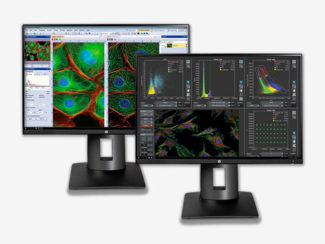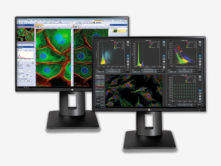Olympus – Digital Microscopy
The Olympus range of DSX1000 digital microscopes enable faster failure analysis with guaranteed accuracy and repeatability. Featuring a large selection of easy to change lenses, switch between 6 different observation methods by pushing a button, fast macro to micro viewing, and accurate measurements with a telecentric optical system.
FEATURED PRODUCTS
scanR is a modular microscope-based imaging platform designed for fully automated image acquisition and data analysis of biological samples. scanR can...
More About scanR High Content Screening Microscope
scanR High Content Screening Microscope 
scanR is a modular microscope-based imaging platform designed for fully automated image acquisition and data analysis of biological samples. scanR can handle many different formats, including multi-well plates, slides and custom-built arrays. This unmatched flexibility makes it equally adept at routine and advanced applications, while preconfigured assays for common applications improve efficiency. Its powerful analysis module provides complex image analysis and advanced data evaluation for standard and bespoke assays.
The LV200 has been carefully designed for long-duration cell bioluminescence. A completely new optical design dramatically increases sensitivity and e...
More About LV200 Luminesence microscope
LV200 Luminesence microscope 
The LV200 has been carefully designed for long-duration cell bioluminescence. A completely new optical design dramatically increases sensitivity and enables the detailed study of photosensitive cells and luminescence probes at high magnification. The built-in system for temperature control, humidity and gas flow helps to keep the cultured cells or tissue slices in a healthy condition throughout the observation period and the unique light-tight enclosure shields the sample and optics from any external light.
The VS120-S6-W slide Scanner system allows for manually loading one and six standard slides, respectively, along with any associated meta-data. Design...
More About VS120 Slide Scanner
VS120 Slide Scanner 
The VS120-S6-W slide Scanner system allows for manually loading one and six standard slides, respectively, along with any associated meta-data. Designed for high throughput research and pathology, the VS120-L100-W system features a highly dependable, robustly designed slide loader for up to 100 slides.



